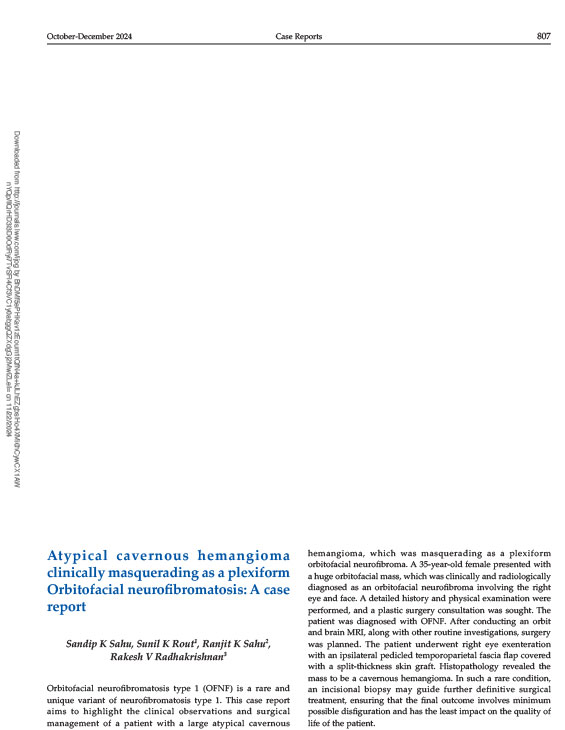Atypical cavernous hemangioma clinically masquerading as a plexiform Orbitofacial neurofibromatosis: A case report
October-December 2024
Abstract
Orbitofacial neurofibromatosis type 1 (OFNF) is a rare and unique variant of neurofibromatosis type 1. This case report aims to highlight the clinical observations and surgical management of a patient with a large atypical cavernous hemangioma, which was masquerading as a plexiform orbitofacial neurofibroma. A 35‑year‑old female presented with a huge orbitofacial mass, which was clinically and radiologically diagnosed as an orbitofacial neurofibroma involving the right eye and face. A detailed history and physical examination were performed, and a plastic surgery consultation was sought. The patient was diagnosed with OFNF. After conducting an orbit and brain MRI, along with other routine investigations, surgery was planned. The patient underwent right eye exenteration with an ipsilateral pedicled temporoparietal fascia flap covered with a split‑thickness skin graft. Histopathology revealed the mass to be a cavernous hemangioma. In such a rare condition, an incisional biopsy may guide further definitive surgical treatment, ensuring that the final outcome involves minimum possible disfiguration and has the least impact on the quality of life of the patient.

